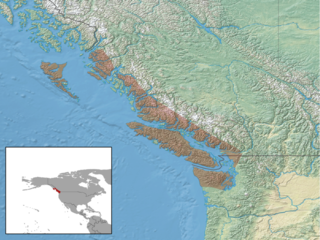
Original source: map data: http://www.naturalearthdata.com/downloads/ distribution data: http://www.iucnredlist.org/details/14171/0
Author: map data: Made with Natural Earth. Free vector and raster map data @ naturalearthdata.com.
Keen's myotis
Order : Chiroptera
Family : Vespertilionidae
Subfamily : Vespertilioninae
Species : Myotis keenii
Which zoos have them?
Minnesota Zoo (United States)The Keen's myotis is listed as Least Concern (LR/lc), lowest risk. Does not qualify for a more at risk category. Widespread and abundant taxa are included in this category, on the IUCN Red List of Threatened Species
Some facts about the
Keen's myotis
Adult weight : 0.007 kg (0.0154 lbs)
Maximum longevity : 19 years
Litter size : 1
Interval between litters : 365 days
Facts about the Keen's myotis
A red-listed species, Myotis keenii, is known to occur within the Weymer Creek Cave system on Vancouver Island (Chatwin et al.
Keen's myotis (Myotis keenii) portrait (#5 of 10) Keen's myotis (Myotis keenii) is found from Alaska south to the coast and coastal islands of British Columbia and to the area of Puget Sound in Washington.
Keen's Myotis Keen's Myotis (Myotis keenii) is found in the Ouachita and Ozark Mountains.
Notes: Myotis keenii is now M.
The Keen's myotis (Myotis keenii) is one of several species of long-eared bats in its genus.
The Keen’s bat (Myotis keenii) is found in the northwest part of the state of Washington and farther north along the Pacific Coast.
The Keen's myotis is one of several species of long-eared bats in its genus and is found from Alaska south to the coast and coastal islands of British Columbia and the area of Puget Sound in Washington. (Full text)
Keen’s myotis is brown in color, darker above than below, and its fur is silky, not glossy like that of the little brown bat which it resembles. (Full text)
More animals beginning with K
